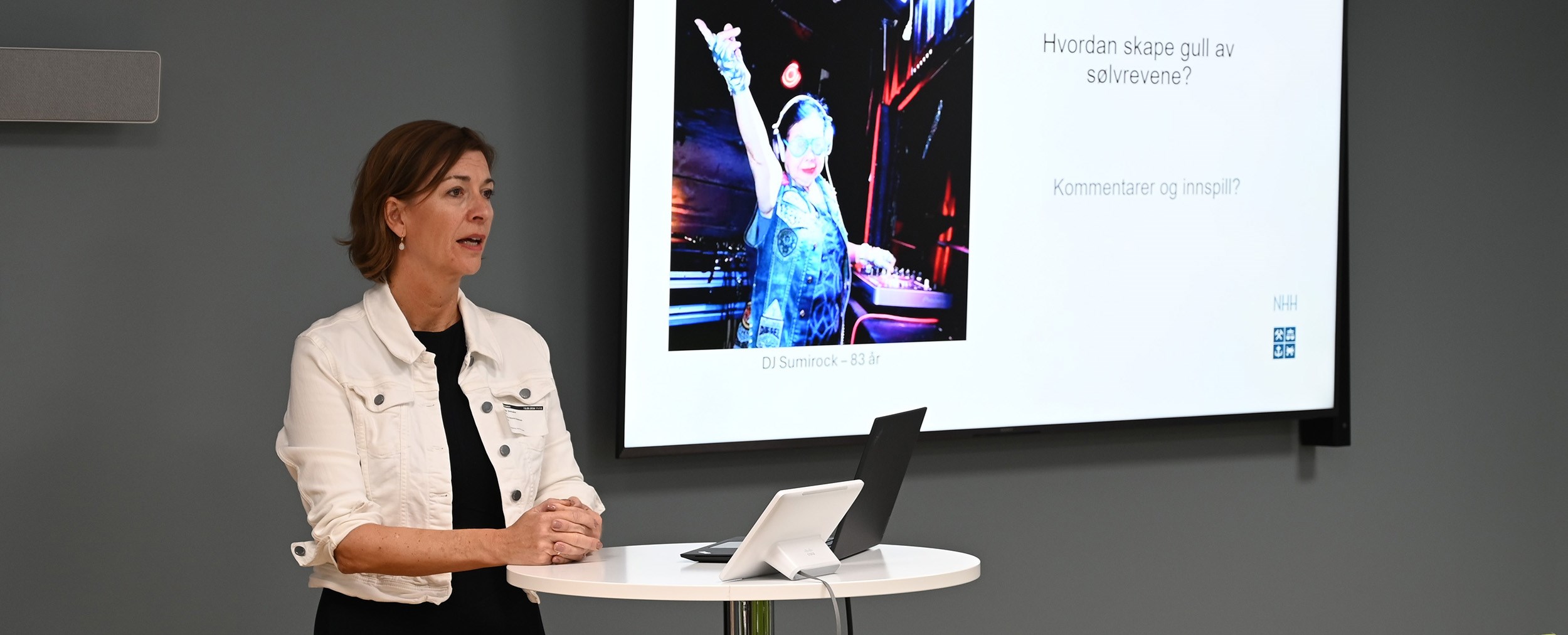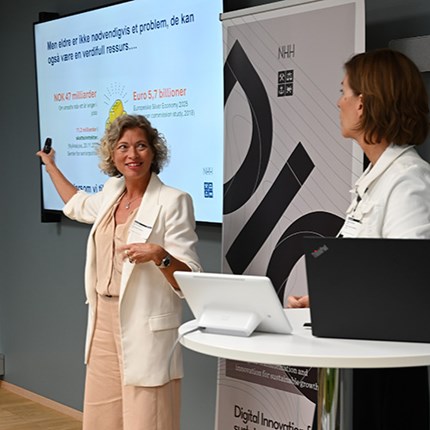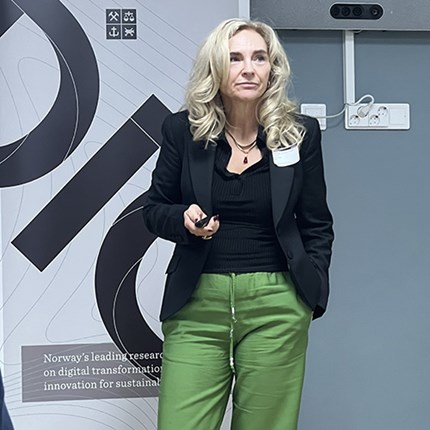
How to Create Gold from Silver Foxes?
The battle for the workforce and a decreasing number of active workers behind each retiree make senior policies in the workplace more important than ever.
How can we get the oldest employees to stay and maintain productivity?
How can we create a work environment that acknowledges that the “aging wave” is a more permanent societal change?
How should businesses and consumer market players change their products and services to stand stronger in a market characterized by an aging population?
Under the title “How to Create Gold from Silver Foxes?” the research center DIG will delve into these and related topics and recently invited relevant partners from the business and public sectors to a workshop to review both challenges and research opportunities.

Natural subjects for research at a business school
With participants from, among others, the Tax Administration, Gjensidige, Veidekke, the Knowledge Center for Longer Working Lives, and the Digitalization Directorate, professors Therese Egeland and Inger G. Stensaker outlined some fundamental challenges in the transformation to a “silver economy.”
"The message now is that you must take responsibility for planning your retirement. You must stay healthy and be productive yourself. What can a business school do and research to contribute to this development," said Professor Inger Stensaker.
She then highlighted these research tasks:
- How to build an inclusive work environment – and what does it mean for workers across generations?
- Develop innovative products and services that meet the demand of a diverse, aging population.
The goal must be both to create sustainable business models and improvements for the individual, said Inger G. Stensaker. The EU has calculated that the total demand for goods and services from the 50+ age group in all EU countries amounts to 5,700 billion Euros per year in the coming years.
Professor Therese Egeland emphasized that the research center DIG at NHH is looking for cases and examples that can be good role models and research objects. For financing the research project, relevant EU funds and other forms of collaboration will be sought.

Satisfied with the 60-year-olds – but not recruiting any
Gro Hege H. Nordbye is the director of leadership development and HR at the construction company Veidekke, a company that has succeeded in getting an increasing proportion of employees in the 60+ category to stay with the company.
She emphasized that the company is generally very satisfied with their work. At the same time, she admitted that they have not actively recruited anyone in that age group, which she acknowledged is a paradox seen in many places in the workforce.
For Veidekke, it is central to maintain that expectations for performance and development are independent of age.
"People learn and develop throughout their working lives. Seniors have valuable skills that the workforce needs," said Nordbye.
At the same time, she added that everyone has a responsibility to make themselves relevant in the workforce.
Insurance schemes need a different design

From the insurance company Gjensidige, Truls Erik Aasen pointed out that as both society and the workforce change to accommodate more seniors, several insurance schemes must also be put together differently.
Today, employers’ insurance for their employees is designed to secure income – which is important for a 30-year-old with a big mortgage, but not as important for a 60+. There, perhaps a health insurance securing rapid
treatment will be at least as relevant.
This illustrates that achieving the goal of “gold from silver foxes” will only partly be about changes in rules and age limits, and more about a change in mentality and attitudes.
The Way Forward
DIG looks forward to further work and knowledge development on this important topic, incollaboration with its partners.
